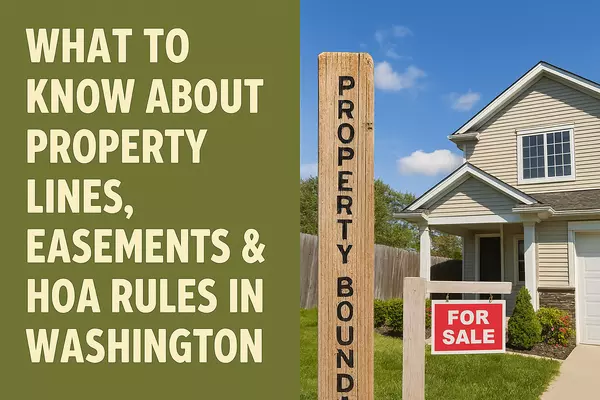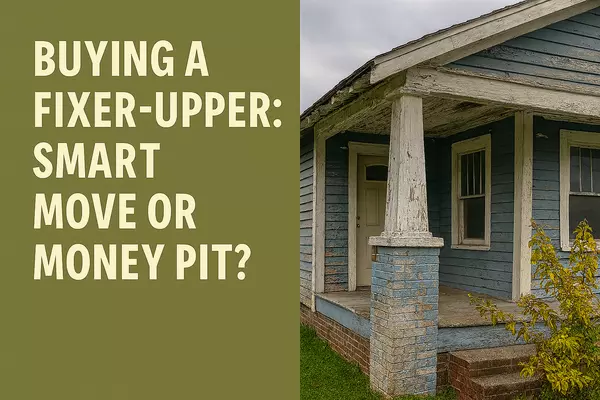How Climate Risks Affect Home Values in Washington

How Climate Risks (Flooding, Wildfires) Affect Home Values in Washington
As climate patterns shift across the Pacific Northwest, Washington homeowners and buyers are paying closer attention to environmental risks like flooding, wildfires, and extreme weather. These changes are not only shaping where people choose to live but also influencing property values, insurance costs, and long-term investment potential.
Here’s how these growing climate risks are impacting Washington’s housing market — and what buyers and sellers should keep in mind.
1. Flood Risks Are Increasing in Low-Lying Areas
From the Snohomish River Basin to coastal towns along Puget Sound, flood risk has become a growing concern. Heavier rainstorms and rising sea levels have increased the frequency of flooding in certain areas — especially during the winter months.
Homes located in flood-prone zones often face higher insurance premiums, stricter building requirements, and in some cases, lower resale values. Buyers are becoming more cautious, and lenders may require additional documentation or flood insurance before approving a mortgage.
What this means for homeowners:
-
If your home is near a floodplain, investing in mitigation — like improved drainage, sump pumps, or raised foundations — can help preserve value.
-
For buyers, reviewing FEMA flood maps and local zoning information is an essential step before making an offer.
2. Wildfire Risk Is Expanding Beyond Eastern Washington
While wildfires have traditionally been more common east of the Cascades, recent years have shown that Western Washington is not immune. Drier summers, hotter temperatures, and longer fire seasons are increasing risk in areas like Pierce, Thurston, and even parts of King County.
Properties in or near the wildland-urban interface (where forests meet residential neighborhoods) can face higher insurance rates and, in some cases, reduced buyer demand. That said, some communities have begun implementing Firewise building standards and defensible space landscaping to reduce risk — measures that can make a property more appealing and insurable.
For sellers: highlighting fire-resistant materials, metal roofing, or maintained clear zones around the home can reassure buyers.
For buyers: check the Washington DNR’s wildfire hazard maps and ask about recent mitigation efforts when evaluating a property.
3. Insurance Costs and Availability Are Becoming a Bigger Factor
As insurers reassess their risk exposure, some Washington homeowners have seen rising premiums or fewer coverage options, especially in high-risk flood or fire zones. While this trend hasn’t reached the extremes seen in states like California or Florida, it’s beginning to affect affordability and buyer sentiment in select areas.
For higher-end or investment properties, these increased costs can subtly influence market values — particularly if annual carrying costs rise faster than rents or appreciation.
Tip: when evaluating a property’s financial performance, include projected insurance changes in your cash flow analysis.
4. Buyers Are Becoming More Data-Driven
Modern buyers, especially those relocating from out of state, are researching environmental risk before they even visit a home. Sites like Redfin, Realtor.com, and ClimateCheck now display property-specific flood and wildfire risk scores.
Homes that demonstrate lower relative risk — or have visible mitigation measures in place — can hold or even increase their value compared to nearby properties that don’t. Over time, these distinctions may become more pronounced, particularly in markets where inventory remains competitive.
5. Long-Term Resilience Adds Long-Term Value
As Washington communities adapt, homes built or upgraded with resilience in mind are gaining a reputation for stability and longevity. Energy-efficient upgrades, stormwater management systems, and sustainable landscaping not only reduce environmental impact but also appeal to environmentally conscious buyers.
In many cases, proactive maintenance and documentation of resilience efforts can boost buyer confidence and protect property value — even in areas with elevated climate risk.
Final Thoughts: Protecting Value in a Changing Climate
Climate risk is now part of the real estate conversation — and in Washington, that means understanding how local geography, regulations, and insurance trends intersect.
For homeowners, the key is mitigation and transparency. For buyers, it’s about due diligence and long-term perspective. Properties in safer zones or with proven resilience measures are likely to perform best over time.
Curious how climate factors may impact your home’s value?
I can help you evaluate risk levels, connect you with local resources, and position your property strategically for today’s market. Contact me to learn more about how Washington’s evolving climate landscape affects real estate decisions.
Recent Posts











Isaac Fairfield
Phone
